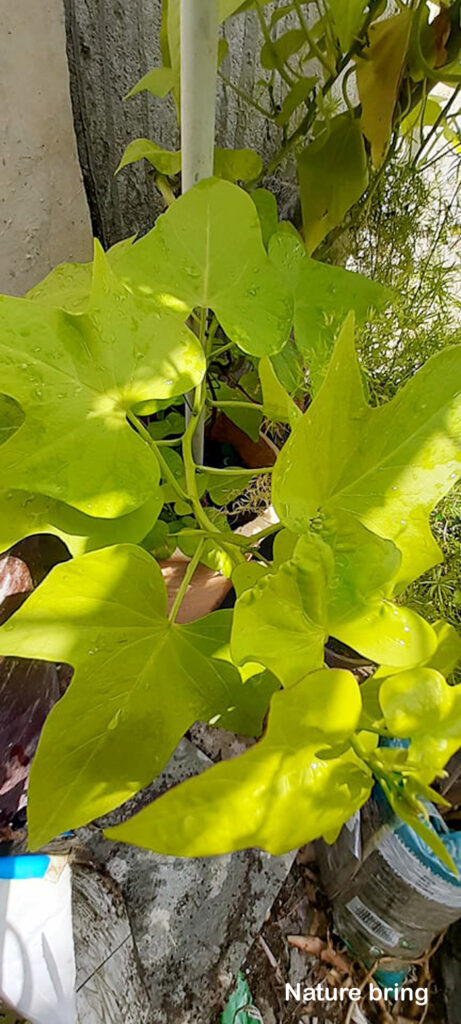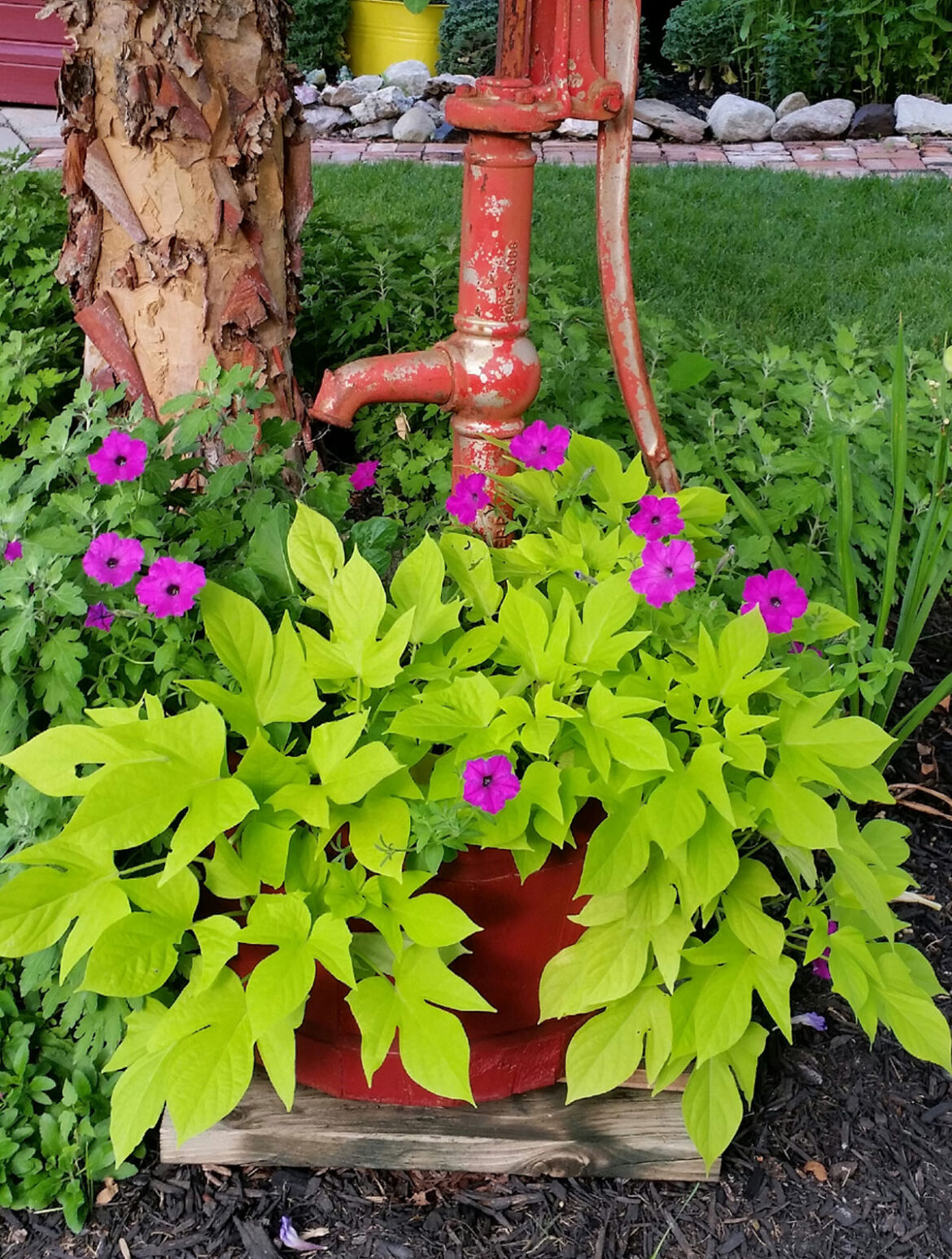Sweet Potato Vine (Ornamental Sweet Potato)
This herbaceous perennial Sweet Potato vine is also known as “man of the earth,” “wild potato vine,” “manroot, “wild sweet potato,” and “Ornamental Sweet Potato” “wild rhubarb.” This foliage plant is found on the edges of wooded areas and rough terrain, with heart-shaped leaves and funnel-shaped white flowers.
Foliage typically consists of alternate, olive-green leaves about 6 inches long, with long, purple-tinted petioles on the stems. The flowers are grouped into groups of one to five at the base of the leaves. The sepals of this flower are light green and hairless, and they overlap. Grown on the plant are white tubular flowers with pink or purple throats. There are five lobes on the corolla, which is 2.5 to 3 inches long and wide.
Overview Sweet Potato Vine
Scientific name Ipomoea batatas
Common name Sweet Potato Vine.
Plant type Perennial herb plant
Sun Full sun
Soil Well-drained moist soil.
Soil pH 5.5 to 6.5
Zone 9- 11
How to Grow and Care Sweet Potato Vine Plant
The plants are grown more for their leaves than for their edible tubers, and the vines on these plants resemble those of morning glory or clematis. A sweet potato vine is a versatile plant that is as good at filling outdoor containers as it is spilling over a wall or covering the ground in a landscape bed. Plants such as these can also be grown indoors year-round or just during winter.

Growing from seeds
The sweet potato vine is not usually grown from seeds, since it can be grown with cuttings and tuberous roots. Germination is aided by soaking seeds for 12 hours in warm water.
Prepare a tray of seed-starting mix that is light and soil-free. Spread the seeds evenly over the tray, three inches apart. Dust the seeds lightly with starter mix. Mix the water with the mix, and spray it onto the tray. Cover the tray with plastic wrap or a humidity dome. Maintain a warm environment for the tray. Keep the starting mixture evenly moist. As soon as seedlings appear, remove the plastic wrap and place them under a grow light in a sunny window. It is best to transplant sweet potato vines immediately after sprouting or to grow them in biodegradable containers. Plant the seedlings outside or in a container before hardening them off.
Growing from cuttings
You can easily grow sweet potato vines from existing plants. Planting the tubers in the spring is also a good way to propagate the plant. Trim off several leaf nodes from a branch with sharp, clean pruning shears. Get rid of the leaves below a few inches. Soak the stem in water. Roots will appear within a few days. In winter, you can keep it indoors in a sunny place. After the last frost in spring, you can transplant it out into the garden in moist, well-draining soil in a sunny spot. Plants should be hardened off before being placed in the garden to acclimatize to outdoor conditions.
Sunlight
A sweet potato vine grows almost anywhere, whether it is in the sun or the shade. Leaf color is strongly influenced by the amount of sunlight a plant receives. It may not survive in full sun in hot-summer climates, such as Southern Florida, especially if the soil is drier than normal.
Watering
Sweet potato vines are drought tolerant, but they grow most vigorously if they receive frequent waterings. Make sure the soil is evenly moist. Provide plants with one inch of water each week, or more during extreme heat. The plants in a container will need more water in times of heat, every 1-2 days.
Soil
It does not matter whether the plants are grown in pots or in the ground; they need well-drained soil. If the soil is too moist, the roots may rot, so make sure the containers have adequate drainage holes. Ideally, the soil should be neutral to acidic.
Fertilizer
Fertilize your sweet potato vines to ensure vigorous growth. During the growing season, a well-balanced fertilizer will boost growth, but due to their naturally robust habits, you may also have to cut them back more frequently.
Pruning
Trimming overgrown or leggy plants will encourage bushier growth and help keep them under control. Prune vines whose tips have grown too far from their boundaries. Vine broken or sickly should be pruned. If you want to encourage new growth, cut 1/4 inch below the leaf nodes.
Read also:
How to Grow sweet potatoes. How to Grow Potatoes in acontainer. Growing Ashwagandha, harvesting, and care. Vinca flowers growing guide. Guduchi plants growing and care tips. Kalanchoe growing and acre.
For pin:




